10 February 2010
A local waterfall in winter
Posted by Jessica Ball
Of course, local for me means Niagara Falls. I took a trip up on Saturday to get myself outdoors for a little while, and while I’m pretty sure no important parts of me were permanently frozen, it was effing cold up there. (Not very snowy, though. It’s pretty ironic that I moved away from the Washington DC area, and they’re now poised to get more snow than Buffalo this year. I think Buffalo’s at about 60 inches, and if DC gets another foot or so with today’s storm, they’ll have us beat. Not that Buffalo is the snowiest place in New York by any means – that’s Syracuse. But I digress.)
One interesting thing I found out about Niagara Falls in the winter is not only is it cold, it’s damp. This is a direct result of all the spray from the Canadian and American Falls. It looks like the US gets the worst the spray off Horseshoe Falls, since the prevailing winds blow from west to east. Anyway, it makes for a somewhat hazardous visit, because everything is covered with ice.
The ice gets really thick in places, and you can see how the layers were built up. This chunk came off a light pole. It’s stratification on a vertical plane!
Quite a bit of the park on the NY side was closed off, presumably because it was so slippery and they didn’t want people too close to the water.
A little artsy shot with a chunk of ice rime:
As it turns out, I have a habit of standing in almost exactly the same spots when I take photos up here. It’s likely that this is just because those are the clear (and well-framed) shots, but it means I can show some neat comparisons between the winter and summer versions of Niagara Falls. As always, click to embiggen:
In the winter, because tourism is slow, the hydroelectric companies on both sides of the Niagara River restrict the water going over the Falls to about half of its full capacity (since full capacity is 100,000 cubic feet/second, this comes out to 50,000 cubic feet/second or 1,400 cubic meters/second). In the summer, somewhere around 10-25% (10,000-25,000 cubic feet/second or 280-700 cubic meters) of the flow is diverted, depending on the level of Lake Erie, which feeds the Falls.
The Canadian side really has the better views, but on the American side you get to wander around on Goat Island, which sits in between the Horseshoe (Canadian) and American Falls. Here’s a couple of shots from the top of Goat Island:
Here’s a brave little seagull and his favorite spot – I’m hoping the rock will be there when the ice melts!:
Looking upstream at both sets of falls:
And again:
It’s pretty neat to see how things change by season. The icepack in the river gets pretty thick, so those Maid Of The Mist boats that you see going out the rest of the year are all beached, and no one goes down to the observation decks (and who’d want to get drenched in the middle of winter? Not me!)
I’ll try to get a few more posts out this week, since I’m going to be in the land of sporadic internet access for the rest of the month. More on that later!



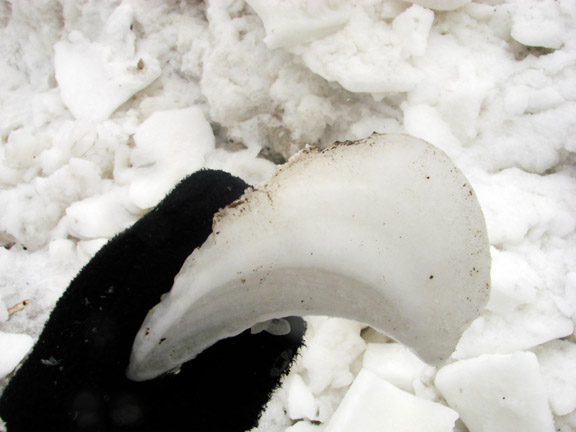
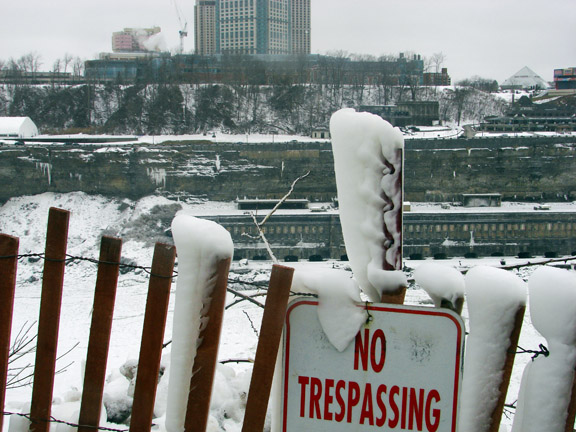

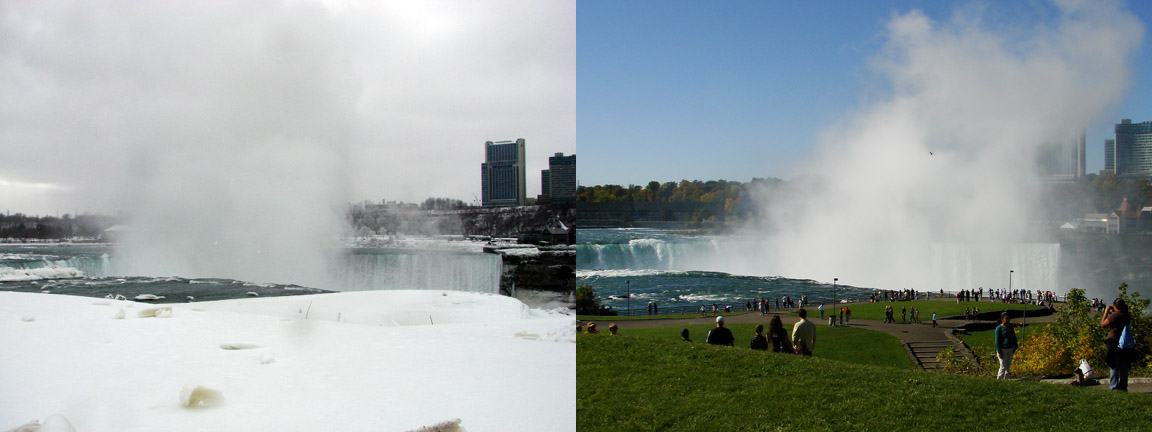


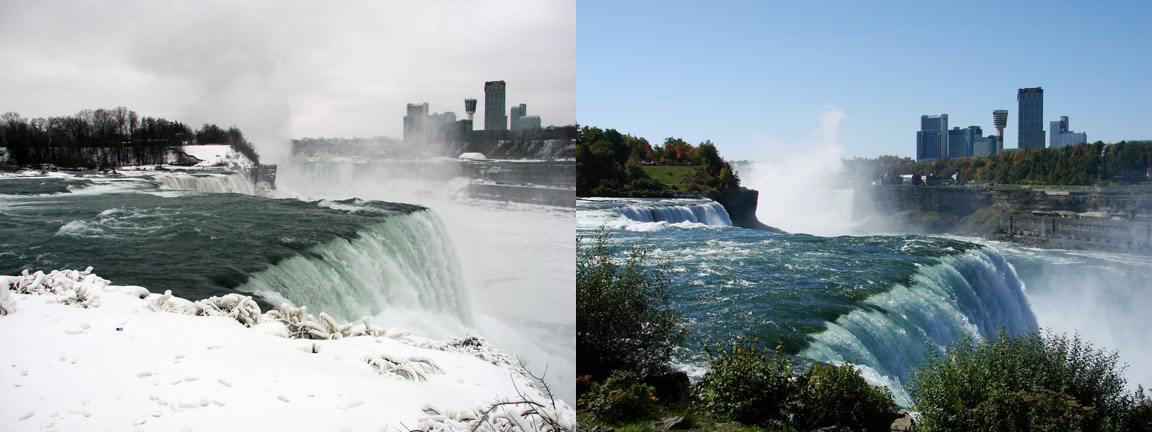
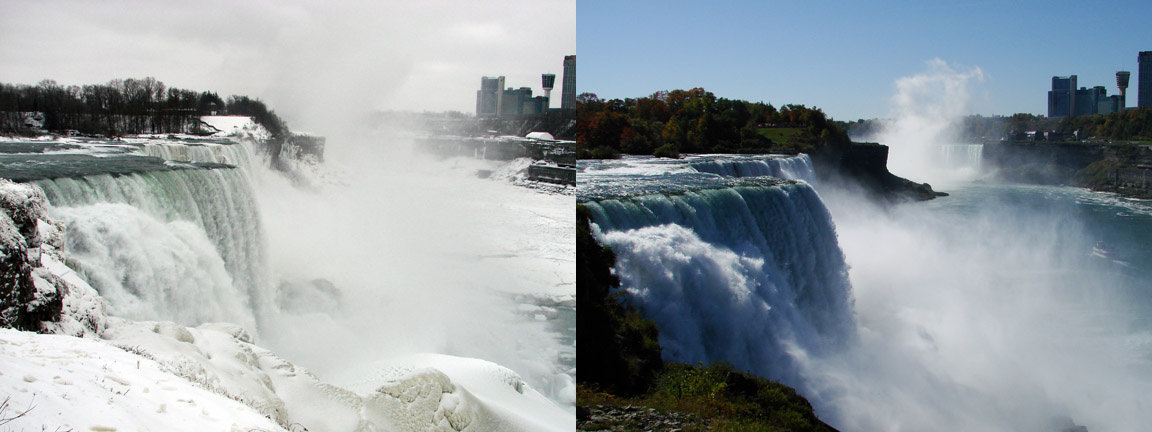
 Jessica Ball is a volcanologist at the U.S. Geological Survey, researching volcanic hydrothermal systems and stability, and doing science communication for the California Volcano Observatory. She previously worked at the Geological Society of America's Washington DC Policy Office, learning about the intersection of Earth science and legislative affairs. Her Mendenhall postdoc and PhD focused on how water affects the stability of volcanoes, and involved both field investigations and numerical modeling applications. Her blogging covers a range of topics, from her experiences in academic geosciences to science outreach and communication to her field and lab work in volcanology.
Jessica Ball is a volcanologist at the U.S. Geological Survey, researching volcanic hydrothermal systems and stability, and doing science communication for the California Volcano Observatory. She previously worked at the Geological Society of America's Washington DC Policy Office, learning about the intersection of Earth science and legislative affairs. Her Mendenhall postdoc and PhD focused on how water affects the stability of volcanoes, and involved both field investigations and numerical modeling applications. Her blogging covers a range of topics, from her experiences in academic geosciences to science outreach and communication to her field and lab work in volcanology.
These are really beautiful photo pairs. Thanks for sharing!
Neat pictures, especially the pairs – those are fun!
The pairs are great. Thanks for sharing.